#habitat restoration
Text
Here, have a spark of hope.
The reality is that no single person can fix the entirety of the current ecological imbalance that has been literally centuries in the making at this point. Yet there are so, so many of us who care, and who are doing what we can to make a difference in whatever every day to day ways we're able. I often think of conservation efforts like the Loren Eiseley story "The Star Thrower" (aka, "the starfish story"). Amid a beach full of stranded starfish, one person cannot possibly save them all, but they can spend what time they have saving those they're able.
And this study shows that these efforts do, in fact, make a difference, not just for starfish but a myriad of species. This meta-analysis of almost 200 studies definitively proves that conservation preserves and restores biodiversity, keeping more species from going extinct. It's all too easy to get entangled in the losses, but we even more need to allow ourselves to celebrate the wins.
That success is crucial to convincing governmental entities and other stakeholders that putting funds toward conservation efforts makes a significant difference and is not only worth the investment, but worth increasing. And, on a personal level, it's necessary for those of us who care so deeply for this world to know when our efforts are having an impact, to buoy us up when the anxiety and grief over ecological destruction wears us down.
There is hope. Keep it up, folks; it's helping <3
#conservation#environment#environmentalism#extinction#endangered species#animals#wildlife#biodiversity#nature#science#scicomm#hope#solarpunk#hopepunk#hopecore#hopeposting#optimism#ecology#habitat restoration#restoration ecology
420 notes
·
View notes
Text
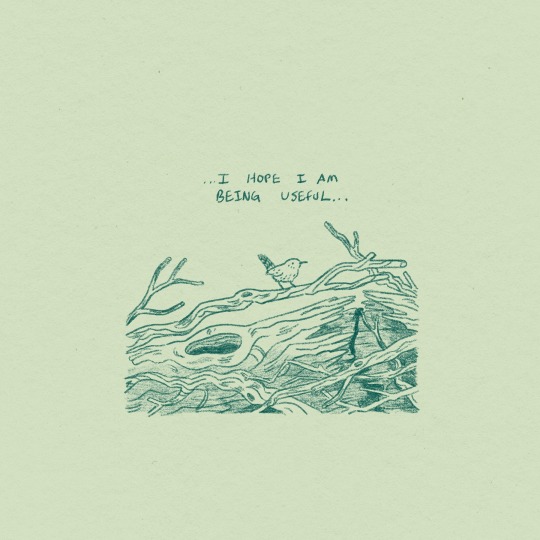
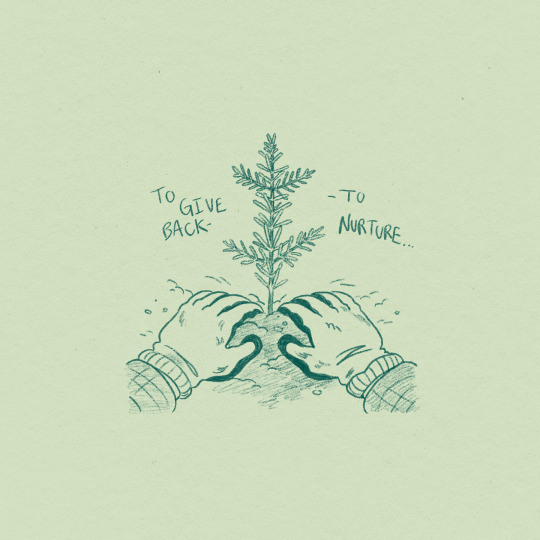

Small journal about my new job, plus a silly little bonus
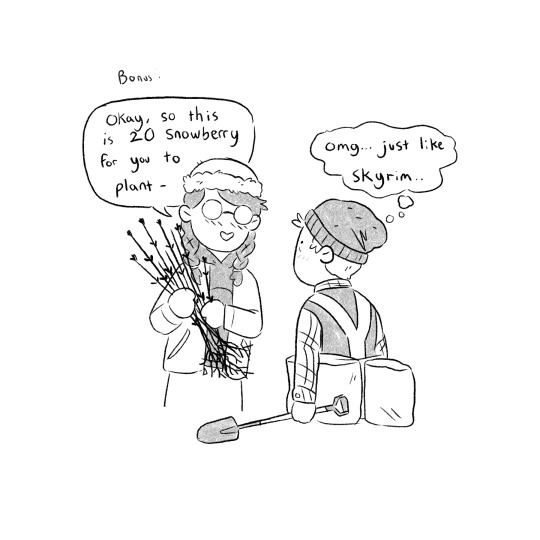
#my art#artists on tumblr#illustration#lgbt artists#nature art#comics#conservation#habitat restoration#journal
2K notes
·
View notes
Text
"Until recently, a visit to the Colorado River’s delta, below Morelos Dam, would be met with a mostly dry barren desert sprinkled with salt cedar and other undesirable invasive plant species. Today, that arid landscape is broken up with large areas of healthy riparian habitat filled with cottonwood, willow, and mesquite trees. These are restoration sites which are stewarded through binational agreements between the United States and Mexico, and implemented by Raise the River—a coalition of NGOs including Audubon"
Thanks to @aersidhe for sending this in!
#submission#bird conservation#river conservation#wildlife#biodiversity#conservation#environment#good news#hope#ecosystem#habitat#habitat restoration#river restoration#climate change#global warming
2K notes
·
View notes
Text
I wanted to make a post with some links to explain why afforestation (planting trees to stop desertification; the change of environments into deserts) is not always the best approach to take.
So lately on social media there's been a lot of misinformation of like tree planting = always good. But the problem with this approach/view is it gives companies and governments the excuse to use forest monocultures (millions of one or few tree species) to fund logging industries instead of taking the time to develop an ecosystem of native plants.
(Link to real life example:)
youtube
Ecosystems undergo ecological succession where bare land is converted to ecologically productive (lots of different organisms with different roles in the ecosystem, nutritious soil) and biodiverse (lots of different species) land. It also takes a long time for this to happen.
See these:
youtube
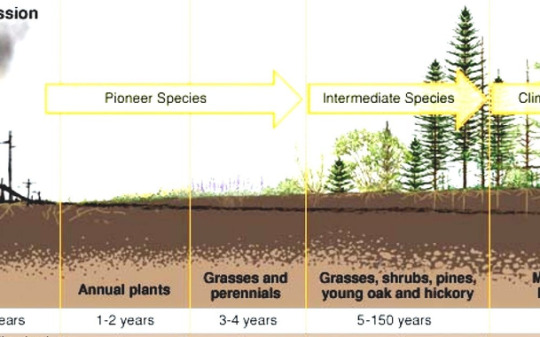
Here's some links a video explaining why just planting trees ultimately doesn't work in the long term if done wrong:
youtube
And here's some links to videos explaining how it can be done right when we actually look at the evolutionary history of the ecosystem and ecology of it and restore it using native species and less rigid attitudes.
youtube
youtube
youtube
youtube
youtube
Habitat restoration is a HUGE branch of conservation biology and is constantly causing disagreements in scientific communities because its a new science and there are so many different branches of biology (e.g. ecology, evolutionary history and ecology, geology, etc) we need to consider and so many old attitudes that need revising in some conservation techniques.
This is only a guide to trees alone in habitat conservation as well, there are so many different habitats other than forest that need to be conserved as well as forests, particularly wetlands which are so abundant in biodiversity and ecosystem services (things ecosystems can do for the world essentially, unfortunately the focus in research can be on what ecosystems can do for us).
I've also not looked much at how this has been done outside of official organisations and I wanna look more at conservation projects ran illegally but I'm bad at finding information lol
#wow i expressed an opinion online without panicking#now to bury my head in the sand if i get criticised#ecology#trees#tree ecology#conservation biology#habitat restoration#rewilding#wildlife#tree conservation#evolutionary ecology#mosscore#forestcore#forests#Youtube
2K notes
·
View notes
Text
*casually posts this at the same time to further my agenda of growing native plants instead of grass and shitty ornamentals*


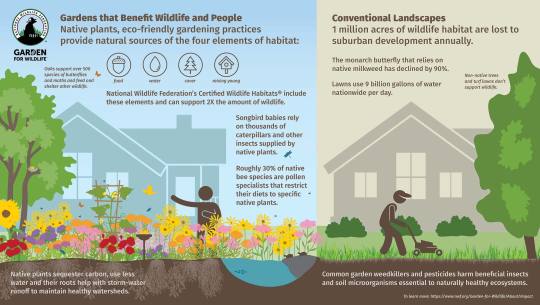


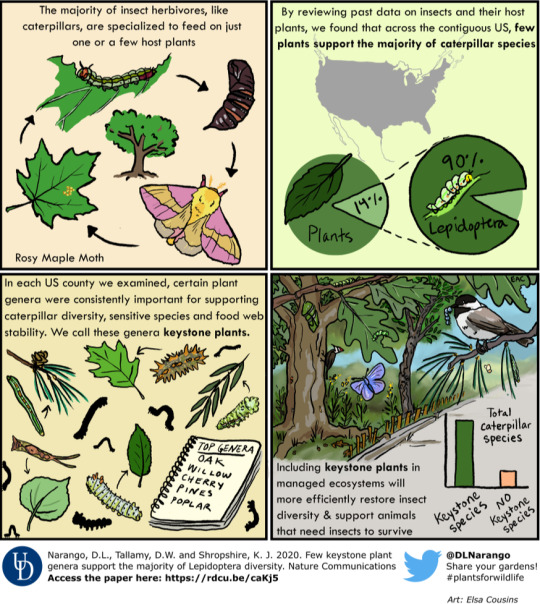

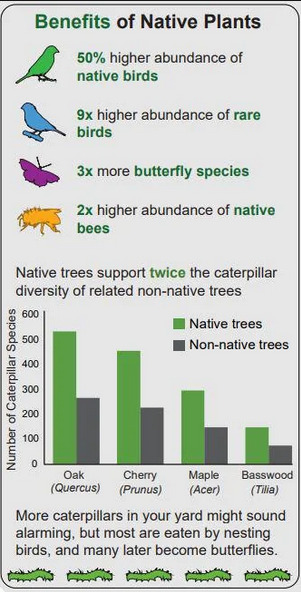

#gardening#water conservation#biodiversity#kill your lawn#native plants#native pollinators#pollinator garden#climate change#sustainability#environmental rehabilitation#habitat restoration#wildflowers#native flowers#animals#water crisis#didnt mean to post that grass one whoops. i think i skimmed it and wasnt thinking about it too much#but ig its true grass would be better than roads. lets just uh. make it native grass yaknow?
240 notes
·
View notes
Text
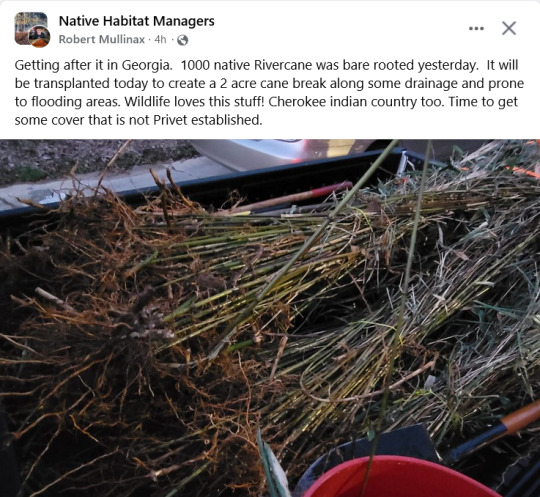
@headspace-hotel Its happening!
529 notes
·
View notes
Photo
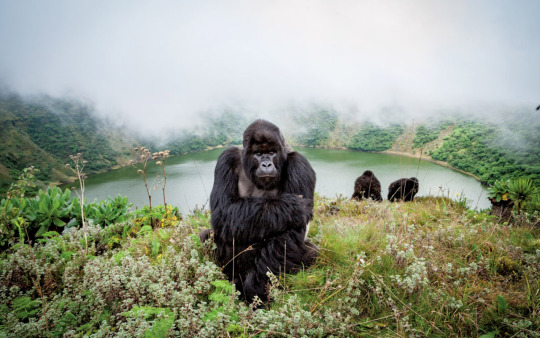
One of the last refuges for mountain gorillas is Rwanda’s Volcanoes National Park, where nearby Singita Kwitonda Lodge is helping to protect the endangered animals through habitat restoration.
PHOTOGRAPH BY CHRIS WHITTIER
#chris whittier#photographer#mountain gorillas#national geographic#rwanda#volcanoes national park#singita kwitonda lodge#endangered animal#habitat restoration#nature#ape#gorillas
68 notes
·
View notes
Text
Wow! I knew that there were efforts ongoing, but this is the first solid timeline I’ve heard - we are just 10 years from staring to reforest the Appalachian mountains with blight-resistant ~American chestnuts, beginning to undo one of the greatest environmental disasters of the last century. If I understand correctly, these hybrids have been selectively bred for generations with the remaining wild American chestnut trees (they will sprout and even flower, but they die young from the blight) until the only observable Chinese chestnut trait left is the blight resistance. The growth habit, leaves, and seed size look exactly like the Native American tree and the hope is that they’ll adopt the same ecological niche as the old American chestnuts (which the Chinese chestnut trees will not).
youtube
#cool#science#chestnut trees#arborists#reforesting#appalachia#progress#environmentalism#habitat restoration#Youtube#rewilding
42 notes
·
View notes
Text
Do you ever think about how many animals are killed by cars on highways. Because of course it’s fine and normal to just destroy migration routes and bisect ecosystems with arbitrary death machine lines and then consider animals inevitably getting hit by cars and dying horrifically a nuisance and a mess and not pointless tragedy?
And there’s such an easy fix for this. Wildlife bridges. You just build a bridge over them every so often, and all the local animals will figure out where they are and use them. There are videos from trail cams on wildlife bridges.
A wildlife overpass was recently added near where I grew up on a section of highway that crosses tribal land in southern colorado, which is amazing, but it’s the only one in the several hundred mile stretch of highway I usually drive across colorado when traveling to visit my family, and this thing was literally only completed in the last year. I’m glad there are more of them now but there still aren’t enough.
We need them everywhere there are highways. There is no reason to pointlessly kill countless animals as a byproduct of us culture’s fetishized worship of individualist transportation death machines, and yet we do anyway. It’s such an obvious solution, if you’re gonna undertake this massive infrastructure project of building and maintaining so many highways, just add some bridges all along them so animals don’t have to risk their lives to navigate the full range of their ecosystems. Especially highways that pass through national forests and blm managed grasslands.
47 notes
·
View notes
Link
“Here’s a good example of the concept of upcycling, if there ever was one.
Sportfiskarna is a Swedish sports fishermen’s association, which has come up with a unique and novel idea to reuse Christmas trees once the holidays are over. In their case, they’ve found that the spruce plants can make ideal habitats for fish, giving them a place to lay their eggs.
Every year, Sportfiskarna--together with Stroma tour operator, Stockholm City, WWF, and Skansen och Stockholms hamnar--collects old Christmas trees and lowers them in the waters in and around Stockholm. This creates new habitats for fish and fry since exploitation is threatening current habitats. The fir trees are bundled together and lowered into the water. The branches of the trees then become aquatic spaces where fish can play and reproduce with freedom and safety.
Reflecting the change in natural habitats
Christmas trees are collected in January every year. They are bundled together and a heavy stone is attached so they can sink and remain at the bottom without floating up. Then they are lowered into the water and new habitats can be formed at the bottom where fish get to use them as their new home.
The waters in Stockholm city and archipelago are today heavily affected by exploitation such as dredgings, boat traffic, quays and marinas. This affects the reproduction of fry because former untouched habitat areas are slowly vanishing...
“The fish’s natural habitat has been eradicated and there is currently not enough vegetation and structures in Stockholm’s polluted water, which is something the fish need. But by adding the spruce to the seabed we can make a kind of artificial reef that forms structures for the fish,” explained John Kärki, project leader at Sportfiskarna, speaking for the Stromma blog.”
-via The Mayor.eu, 1/20/23
#sweden#fish#fishermen#fishing#christmas tree#artificial reef#ecology#habitat restoration#spruce#stockholm#good news#hope
185 notes
·
View notes
Text
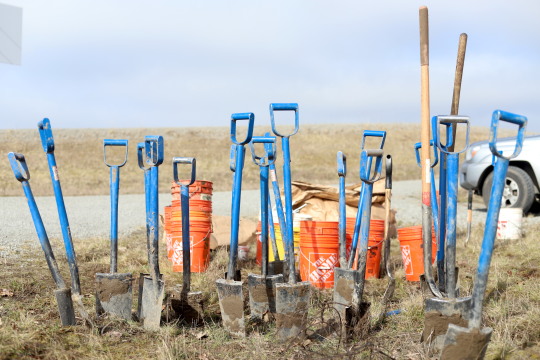


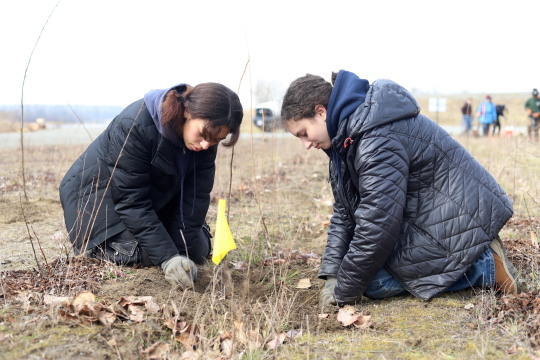

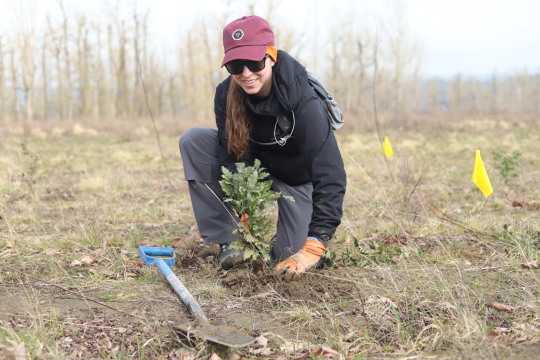

I recently had the pleasure of photographing a habitat restoration event as part of a larger restoration project at Steigerwald Lake National Wildlife Refuge in Washington. The event was hosted by the Lower Columbia Estuary Partnership, U.S. Fish and Wildlife, and Columbia Gorge Refuge Stewards. A chilly morning gave way to brilliant sunshine as over 30 volunteers gabbed shovels to tuck into the soil hundreds of bare root native plants including Red Flowering Currant, Oregon Grape, and Cottonwood trees.
17 notes
·
View notes
Text
This is super exciting! Invertebrates are often overlooked in favor of the charismatic megafauna, but in a lot of ways they're even more ecologically crucial. These little native snails are detritivores, helping to break down decaying matter and convert it back to nutrients more accessible to other living beings. The invasive snails that overtook their habitat--the African giant land snail and the rosy wolf snail--don't fulfill the same ecological roles. The former voraciously chows down on live plants, while the latter is a carnivore that hunts down other snails.
It's even more important to be reintroducing the native partula snails, because these species have been declared extinct in the wild. The last few members of each species were brought into captivity and bred in safe enclosures, and now their descendants are heading back to their historic range in places that have had all of their predators removed so they have a good chance of building up a healthy population before spreading out beyond those safe confines.
And to that I say: "Go, little snails, go!"
#snails#nature#invertebrates#animals#molluscs#wildlife#endangered species#extinction#biodiversity#environment#habitat restoration#ecology#conservation
2K notes
·
View notes
Text
22 September 2023 - Friday Field Notes
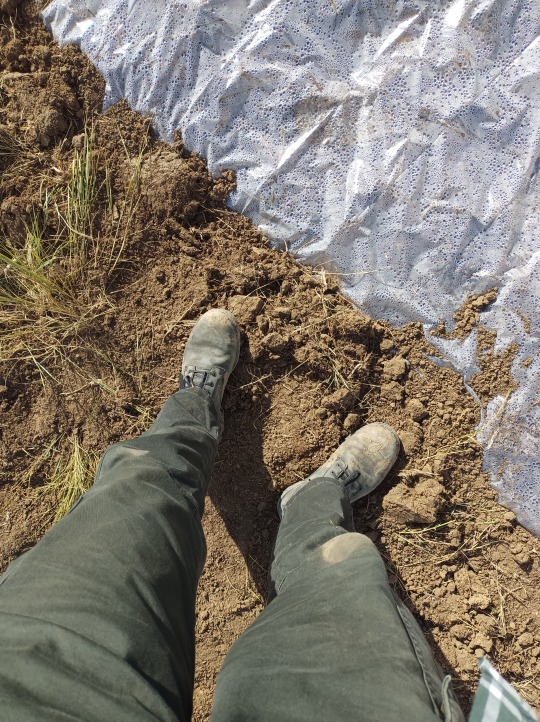
Field work is not glamorous.
It doesn’t matter what field you work in. Often times you’re outside for hours on end, the weather doesn’t cooperate when you need it too, you’re covered in sweat, in dirt, you’re overworked, you’re underpaid, your organization is understaffed, you don’t have the resources or the equipment you need to do the work, and trying to get people to give a shit and effect the change that needs to happen is a perpetual uphill battle that rivals Sisyphus’s eternal punishment. But you adapt, you improvise, and you do the work anyway.
Because it’s important. Because it matters. To me. To you. And to every living thing on this planet. You do it so things can grow and thrive.

Part of my job doing restoration work is removal and management of invasive species, like this Mullein pictured above. Now, Mullein is a plant that originated in Europe and Asia and was brought over to North America for cultivation purposes.
However, it didn't originate in the ecosystems in N. America, didn't evolve along with the local flora and fauna, it has no biological checks in the Great Plains to keep it from overrunning an area like it would in Europe or Asia. Not having any biological checks allows species to create monocultures, which isn't great because it reduces the overall biodiversity of an ecosystem, making it less robust and unable to support the vast array of wildlife you should find in a given area. Some species in the Great Plains do utilize the Mullein as a resource, but again, since it didn't evolve here many species are essentially losing food and habitat because of this plant.
Monocultures also reduce the effectiveness of a habitat's ecosystem services that help support life for all living organisms. Including us. Clean air, clean water, nutrient rich soil to support the growth of food, capturing carbon to sequester to reduce climate change... All reliant on biodiversity. All reliant on populations of native plants.
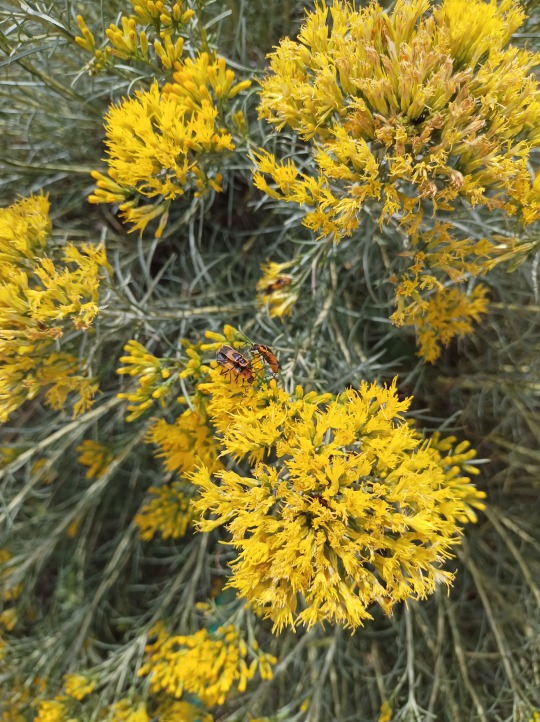

It's not enough to just remove invasive species though. You can't take something out, without putting something back in. Good land management and stewardship practices should also restore ecosystems. Rabbitbrush and Rocky Mountain Bee Plant are both species that are native to my local area, and are a resource for all manner of species.
And that Bee Plant, we planted that last season. It was the only one that grew, but look at all the seed pods on that thing! Hopefully those seeds will go on to make even more Bee Plants and support even more wildlife!
I watched this documentary series last week for work and I'd highly recommend it. It's about the native seed supply chain in the western United States for restoration efforts. A really large area, that needs as much helps as it can get.
https://ser-insr.org/native-seed-film - You can watch it in sections, or they have a couple of different lengths depending on the time you have. But if you only have 12 minutes to give, for sure watch the introduction.
Now, I'd like to point out, these large scale efforts are important, but restoration efforts don't have to be big or elaborate. If you have a spare planting pot or a backyard, you have the ability to restore native habitat. You can bring those ecosystems to you. And it doesn't necessarily require you tearing out your whole yard or sacrificing the plants you do grow.
It may require a bit more homework (you're gonna have to research what plants are native to where you live), and some trial and error, but there are a lot of gorgeous native plants out there that require very little work once they're established compared to "traditional" garden plants.
Humans have carved out huge swathes of land for our own purposes, often to the detriment of other living things and ourselves. We've destroyed entire habitats and ecosystems due to human vanity and simply walked away. Cut our losses. Those habitats and ecosystems are lost. But the land is not gone. And who's to say all those things that are lost can't be found.
It's not easy work, but with some compassion, and a little bit of knowledge, and the willingness to be patient, perhaps we can weave the land back together. Not the way it was, but rather better.
A ghost can dream, right? And perhaps this Pronghorn does too.

It's hard to appreciate the subtle beauty of the prairie. It's not a forest. Not the ocean. Most people might only see grass and not see the richness. The diversity. But I've done a shit-ton of digging this week to try and install a native plant garden.
Field work, manual labor and sweating outside with a shovel, is not glamorous.
But I'm doing this so people can hopefully see the beauty of the prairie, so they can see the beauty in the land around them and perhaps consider planting some native plants of their own. So every living thing out here, big or small, can have a home.

And here's a Megacyllene (sp?), probably a Locust Borer Beetle. It has wasp stripes to dissuade predators from trying to eat it.
#nature#field notes friday#restoration work#short grass prairie#plants#habitat restoration#native plants#locust borer beetle#pronghorn#rocky mountain bee plant#rabbit brush#mullein#land management#land stewardship#native seed restoration#little ghost on the prairie
27 notes
·
View notes
Link
#environment#hope#good news#habitat restoration#river#river conservation#pollution#environmental grief#ecogrief
1K notes
·
View notes
Text
once again making a variation of this post:
If you are going to plant milkweed to help monarch butterflies, you are not allowed to get mad at other insects who come to the plant and eat the caterpillars. They are also starved for the habitat that milkweed provides, and they are not evil or bad or cruel for continuing their natural role in the ecosystem as predators of small caterpillars.
Planting milkweed helps monarch butterflies. It also helps more species than I can count or even list off the top of my head. Milkweed does not exist for the sole benefit of monarch butterflies.
If you want the monarch caterpillars to not get eaten, then you can buy a butterfly cage or build one and bring any caterpillars you find on the main plant into the cage with some potted milkweed, and keep them in there until they emerge as adults.
Nature is going to keep doing its thing whether people have decided monarchs are the most important species on that plant or not. The species that prey on monarch caterpillars are not being mean, or cruel. They do not know that monarchs are endangered, and neither do the monarchs. The predators of monarch caterpillars are playing the same role they've played for thousands of years - population control.
It's not their fault monarchs are endangered. Habitat loss and climate change are the reason monarchs are endangered.
You are not allowed to blame native species for doing their job on native plants in their native ecosystem.
If you look at a milkweed plant covered in half a dozen or more different species and your response is "Ugh! But I planted this just for the monarchs!" you need to learn and care more about habitat restoration instead of only caring about the pretty butterflies.
If your single milkweed plants has half a dozen different species living on it and this upsets you, then you really need to start thinking about the word ecosystem and start realizing, "oh, if this single plant is enough to attract all these species, then they must be desperate for habitat".
If you're mad that monarch caterpillars are being eaten on milkweed you planted, then here are your options:
Get a butterfly cage or build one. It should remain outdoors. Get several milkweed plants that are in pots that can fit inside the cage. Check the main milkweed plant for caterpillars whenever possible, and if you find them, transfer them into the butterfly cage onto the milkweed in there. Keep them in there until they form chysalises and emerge as adults. If you aren't home very often, you can look up youtube videos of how to gently remove the chrysalis and hang it up outside so the adults can fly away whenever they're ready to.
Plant more milkweed. Plant as many species of milkweed are native to your area that you can get your hands on. Spread milkweed seeds wherever it will be able to grow. Encourage your neighbors and friends to grow milkweed. Save the seeds and give the seeds away for free, and spread them in wild areas where other plants are allowed to grow (Try to avoid areas that get mowed down or tended to)
Figure out a way to cope with the fact that the natural cycle of life doesn't make exceptions for endangered species. It is not wrong or bad or evil or mean or cruel for monarch caterpillars to get eaten by their natural predators. Take pictures of the other species you find on the milkweed, research what they are. If you use iNaturalist, make observations for them. Learn to appreciate all the species native to your environment, not just the pretty butterflies.
Actually, planting more milkweed should be your #1 priority. The point of planting milkweed is to restore habitat. If the only habitat available is the single plant in your garden of otherwise non-native species, then yeah, you need to plant more milkweed.
#Monarchs#danaus plexippus#milkweed#aslepias#gardening#habitat restoration#climate change#gardening tips#Monarch butterfly#monarch caterpillar#if you think milkweed belongs solely to monarchs...you do not understand how ecosystems work and you should work on learning how they do.#If you're going to get pissed off about other native species preying on monarch caterpillars then you have a lot of learning to do#so go fucking do it#don't act like other native species are bad for doing what they've evolved to do over the entire history of this planet#It's not their fucking fault monarchs are endangered#if you want the monarchs to not be preyed upon then raise them in an enclosure#otherwise you're literally just gonna have to deal with it
272 notes
·
View notes
Note
i have question that will betray my ignorance: where do you get the seeds? You've posted about planting seeds growing flowers several times. Where are you getting the seeds from?
I buy them, generally. Capitalism is very efficient.
If you wanted to buy some, my suggested order of operations:
1) figure out which plants are likely to have been extirpated from your area. Use a native plant database to compile a list of mid sized shrubs and herbaceous flowering plants that might conceivably make a good addition to a spot.
2) search for people selling seeds of those species. Buy heirloom if you can. Buy Native when you can.
3) Buy what you can.
4) best time for planting is fall, just before the rains, or spring, just after the thaw. Some species will have to over-summer or over-winter before they’ll sprout.
⭐️) no matter what else you do learning about the plants that belong around you is never a waste of time, no matter what you do with the knowledge
46 notes
·
View notes